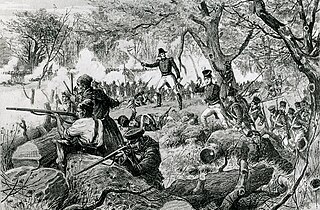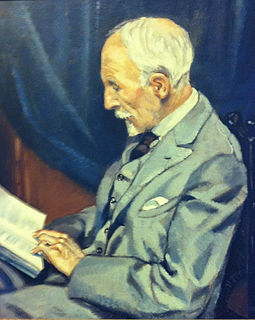


| Part of a series on the |
| Military history of Nova Scotia |
|---|
 |
The Nova Scotia Fencibles were a military regiment raised in Nova Scotia, Canada, in 1803. The unit had red uniforms with yellow facings.



| Part of a series on the |
| Military history of Nova Scotia |
|---|
 |
The Nova Scotia Fencibles were a military regiment raised in Nova Scotia, Canada, in 1803. The unit had red uniforms with yellow facings.
The Nova Scotia Fencibles were the only regiment stationed in Newfoundland in 1812. [2]
Although posted to Kingston in Upper Canada in 1814, the regiment did not see action and was disbanded in 1816.
Half the unit, some 210 officers and other ranks, together with 48 wives and children, were on board the Archduke Charles when it wrecked on 10 June 1816 near Green Island, having cleared the Saint Lawrence River. The Regiment had marched from Kingston to Quebec and had embarked there for Nova Scotia. Four soldiers, two wives, and two children lost their lives; all others were saved. Contemporary accounts referred to the regiment as the Royal Nova Scotia Regiment, which had, however, been disbanded some years earlier.

When the United States and the United Kingdom went to war against each other in 1812, the major land theatres of war were Upper Canada, Michigan Territory, Lower Canada and the Maritime Provinces of Nova Scotia, New Brunswick, Prince Edward Island and Cape Breton . Each of the separate British administrations formed regular and fencible units, and both full-time and part-time militia units, many of which played a major part in the fighting over the two and a half years of the war.
Port Williams is a Canadian village in Kings County, Nova Scotia. It is located on the north bank of the Cornwallis River, named after Edward Cornwallis, first governor of Nova Scotia. As of 2016, the population was 1,120.

General Richard Philipps was said to have been in the employ of William III as a young man and for his service gained the rank of captain in the British army. He served at the Battle of the Boyne in 1690 and promoted to Lieutenant Colonel in 1712.

The 42nd Regiment of Foot was a Scottish infantry regiment in the British Army also known as the Black Watch. Originally titled Crawford's Highlanders or the Highland Regiment and numbered 43rd in the line, in 1748, on the disbanding of Oglethorpe's Regiment of Foot, they were renumbered 42nd and in 1751 formally titled the 42nd (Highland) Regiment of Foot. The 42nd Regiment was one of the first three Highland Regiments to fight in North America. In 1881 the regiment was named The Royal Highland Regiment , being officially redesignated The Black Watch in 1931. In 2006 the Black Watch became part of the Royal Regiment of Scotland.

The Old Burying Ground is a historic cemetery in Halifax, Nova Scotia, Canada. It is located at the intersection of Barrington Street and Spring Garden Road in Downtown Halifax.
The Fencibles were British regiments raised in the United Kingdom, Isle of Man and in the colonies for defence against the threat of invasion during the Seven Years' War, the American War of Independence, the French Revolutionary Wars, the Napoleonic Wars and the War of 1812 in the late 18th and early 19th centuries. Usually temporary units, composed of local recruits and commanded by Regular Army officers, they were usually confined to garrison and patrol duties, freeing Regular Army units to perform offensive operations. Most fencible regiments had no liability for overseas service.

The 40th Regiment of Foot was an infantry regiment of the British Army, raised in 1717 in Annapolis Royal, Nova Scotia. Under the Childers Reforms it amalgamated with the 82nd Regiment of Foot to form the Prince of Wales's Volunteers in 1881.

The Queen's Rangers, also known as the Queen's American Rangers, and later Simcoe's Rangers, were a Loyalist military unit of the American Revolutionary War. Formed in 1776, they were named for Queen Charlotte, consort of George III. The Queen's Rangers served as a light corps in the tradition of British rangers during the Seven Years' War, operating on the flanks and in advance of Crown forces, manning outposts, conducting patrols, and carrying out reconnaissance and raiding operations.

Harry Piers (1870–1940) was a Canadian historian. He was a long-serving and influential historian and curator at the Nova Scotia Museum in Halifax, Nova Scotia. Piers was born on February 12, 1870 in Halifax.
The Glengarry Light Infantry Fencibles were a light infantry unit, raised chiefly in the Glengarry District of Upper Canada shortly before the outbreak of the Anglo-American War of 1812. The unit fought throughout the war, and was disbanded shortly afterwards.
The Royal Fencible American Regiment of Foot was a Loyalist battalion of infantry raised in 1775 to defend British interests in the colony of Nova Scotia. The RFA was commanded by Lt. Col. Joseph Goreham throughout its existence. The most notable achievement of the RFA was the successful defense of Fort Cumberland during the Eddy Rebellion in November, 1776, which prevented the revolution in the other American colonies from moving into Nova Scotia.
Archduke Charles was built in Newcastle, England in 1809. She was sheathed in copper in 1810 and partially resheathed with copper in 1812. She made one voyage transporting convicts from Ireland to New South Wales, and on her return voyage to Britain she carried a cargo from China for the British East India Company (EIC). She was wrecked in 1816 while carrying troops from Quebec to Nova Scotia.
The Royal Nova Scotia Volunteer Regiment, also known as the Loyal Regiment of Nova Scotia Volunteers and Loyal Nova Scotia Volunteers, from 1775-1780, the Royal Regiment of Nova Scotia Volunteers, from 1780-1783, and the Royal Nova Scotia Volunteer Regiment and Nova Scotia Volunteers, was a British Loyalist provincial battalion, of infantry, raised in 1775, to defend British interests, in the colony of Nova Scotia. The unit was commanded by Col. Francis Legge, until replaced by Col. John Parr in 1782. The Royal NS Volunteers never saw combat, but did play an important role in the defense of the colony of Nova Scotia, in the later years, of the American Revolution.

The King's Orange Rangers, also known as the Corps of King's Orange Rangers, were a British Loyalist battalion, raised in 1776 to defend British interests in Orange County, Province of New York and generally in and around the New York colony, although they saw most of their service in the Province of Nova Scotia. The battalion's commander was Lieutenant Colonel John Bayard. The Rangers had an undistinguished military record, through most of its existence, and saw very limited combat, mostly against Patriot privateers, but did play an important role in the defence of the colony of Nova Scotia in the later years of the American Revolution. The King's Orange Rangers are especially remembered for their role in the defence of Liverpool, in the Nova Scotia colony.

The Royal Nova Scotia Regiment was a battalion of infantry raised in 1793 to defend British interests in the colony of Nova Scotia during the Wars of the French Revolution. The unit was commanded by Colonel John Wentworth, the lieutenant-governor of the colony, throughout its existence. The Royal Nova Scotia Regiment (RNSR) had an undistinguished history through most of its existence, and saw very limited action, mostly in the role of marines, but did play an important role in the defense of Nova Scotia during these wars.
Major Otho Hamilton was a military officer of the 40th Regiment of Foot who served on the Nova Scotia Council and as Governor of Placentia.

Lieut. Col. James Fullarton, C.B., K. H. was a soldier who fought in the Kandyan Wars (1803-1807). During the Peninsula War he fought in the Battle of Corunna (1809) and the Battle of Barrosa (1811). He then went to Holland and in the War of the Sixth Coalition he was sent to attack Merksem and then bombard Antwerp. During the Hundred Days, he fought in the Battle of Waterloo (1815), where he was second in command of the 3rd Battalion, 95th Regiment of Foot, and wounded at Waterloo. He lived the last seven years of his life in Halifax, Nova Scotia.

Lieutenant Colonel Samuel Vetch Bayard was a Loyalist military officer in the American Revolution who served in the King's Orange Rangers (KOR). He is the son of William Bayard who founded the KOR. He was the grandson of Governor Samuel Vetch and was the father of Robert Bayard.
104th Regiment of Foot was a regiment of the British Army. The regiment had its origins in the New Brunswick Regiment of Fencible Infantry, a unit of fencibles raised for the defence of the colony of New Brunswick in 1803. Recruits were drawn from across British North America, Scotland, Ireland and existing British Army units. The regiment was formally entered into the establishment in 1806 with a strength of around 650 enlisted men but grew to almost 1,100 by 1808. In 1810 the regiment's officers requested that it join the British Army as a regiment of foot. This request was granted on 13 September 1810 and the unit was renamed the 104th Regiment of Foot.